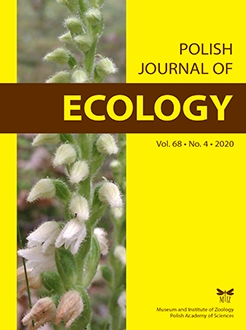Peng Lv, Xiaoan Zuo, Shanshan Sun, Jing Zhang, Shenglong Zhao, Ya Hu
Polish Journal of Ecology 68 (4), 283-295, (2 February 2021) https://doi.org/10.3161/15052249PJE2020.68.4.002
KEYWORDS: vegetation characteristics, Soil properties, Nitrogen mineralization, growing season, Horqin Sandy Grassland, restoration
Soil nitrogen mineralization strongly affects N availability, thus impacting the primary productivity in ecosystems. The seasonal environmental changes affect soil mineralization in restored sandy grasslands such as a studied mobile dune (MD), a semi-fixed dune (SFD), a fixed dune (FD) and a grassland (G). During the growing season, we examined the association of soil N mineralization rate with vegetation characteristics, soil properties and climatic factors through the multivariate stepwise regression model. The vegetation cover, species diversity, above- and belowground biomass, soil carbon, nitrogen, soil water content (SWC), pH, electrical conductivity, very fine sand, clay and silt fractions increased during sandy grassland restoration. The NH4+-N concentration in MD and SFD was higher than that in FD and G, while NO3--N and inorganic N concentration showed a reverse trend. The NH4+N, NO3--N and inorganic N concentrations in MD, SFD and FD reached to the highest values in June, while in G they were highest in May. The net mineralization and nitrification rates increased with sandy grassland restoration; both of these rates were much greater in June than in other months at all sites. Regression analysis showed that the NO3--N concentration, SWC, pH of the soil and precipitation could explain 75% of the total variation in net nitrification rate, and the NO3--N concentration and precipitation could explain 59% of the total variation in the net mineralization rate. These results illustrate that the sandy grassland restoration can enhance the soil N availability, with soil N mineralization mainly determined by the changes of the NO3--N concentration and precipitation.


